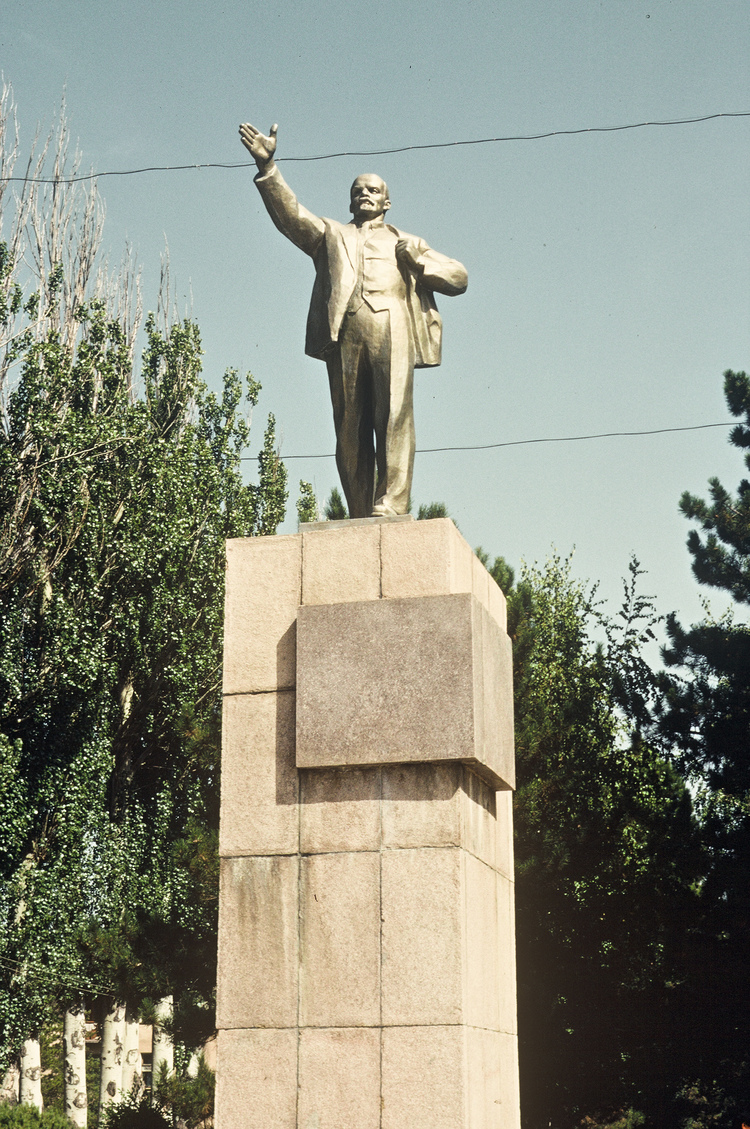Like Stalin, Vladimir Ilyich Ulyanov (Lenin was his nom de plume) remains a controversial historical figure. Indeed, the presence or absence of a Lenin statue tells us something about how ready a country or people is to shake off cultural and ideological links to the Soviet era. In Eastern Europe, the Baltic States and the Caucasus, the break came quickly and decisively, and the Lenin statues fell almost as fast—in 1989 in Krakow, in 1990 in Bucharest, in 1991 in Tbilisi and Yerevan, and so on. Yet in Russia, Belarus, eastern Ukraine and some Central Asian republics, Lenin statues still stand in many public squares and parks.
In 2012, Russian lawmakers proposed relocating Lenin monuments to museums or side streets, or selling them to collectors, ostensibly to reduce vandalism and maintenance costs. But the debate in the parliament (Duma) revealed an ideological agenda. One deputy claimed that the presence of Lenin statues in most Russian cities and towns meant the revolutionary leader still exercised a stranglehold on history, and that was unfair to other Russian historical figures. Didn’t Ivan the Terrible or Catherine the Great deserve equal historical billing? Predictably, the Communist Party did not like the idea. As one senior party member put it: “Lenin is the founding father of the Russian Federation. Same as George Washington in America.”
Kyrgyzstan, like other Central Asian republics, has a schizophrenic relationship with its Russian and Soviet past—a mix of resentment against military conquest and repression, political and economic control, and nostalgia for a time when everyone had housing, education, medical care and a job, even if pay was low, the lines at the shops were long, and there wasn’t much on the shelves once you got inside.
In 1984, to mark the 60th anniversary of the creation of the Kyrgyz Autonomous Soviet Socialist Republic (ASSR), a new Lenin Square was built in the capital, Bishkek, along the main east-west street, Leninsky Prospekt. Its focal point, in front of the new historical museum, was a statue of Lenin in one of his more dramatic poses, his right arm raised in the direction of the Kyrgyz Ala Too mountains to the south.
At independence, Leninsky Prospekt became Chuy Prospekt and Lenin Square Ala Too Square, but Lenin remained, his arm outstretched. Locals jested that he was trying to direct traffic or hail a taxi on one of the city’s busiest streets. In August 2003, the authorities moved the statue to a more discreet location—a park on the other side of the historical museum. To mark what the government described, in something of a historical stretch, as “2,200 years of Kyrgyz statehood,” it was replaced by a statue of Erkindik (Liberty)—a winged female figure on top of a globe, holding a tunduk, the circular frame that forms the top of the traditional Kyrgyz nomadic dwelling, the yurt. As the Lenin statue was dismantled, protestors filed a lawsuit and marched with “Hands Off Lenin!” banners. Communist party leader and parliamentary deputy Absamat Masaliev claimed officials wanted to convert a bomb shelter under the statue into an underground retail complex. “Who gave the small nation of Kyrgyzstan its statehood? Lenin!” said another opponent.
The removal was supported by a coalition of NGOs. “Lenin did not offer anything except violence and dictatorship,” its leader, Edil Baisalov, said. He claimed that there were about 4,000 Lenin statues in towns and villages in Kyrgyzstan. “Isn’t that rather too many for a person who never even visited Kyrgyzstan, and didn’t say a word about our country anywhere in his works? For Kyrgyzstan to still have so many monuments to Lenin is like Germany preserving statues of Hitler. If we really want to build a democracy and a new civil society, we must tear such things down.” Other commentators were more cynical. “If the authorities don’t like Lenin any more, why don’t they just remove the statue’s head?” asked one parliamentary deputy. “That way, each new leader could simply screw a model of his head onto Lenin’s body. Just think of the money that could be saved.” The government ended up spending more money. In 2011, reportedly because some Kyrgyz believed that a woman holding a tunduk was a bad omen, Erkindik was supplanted by Manas, the national folk hero.
Although some Kyrgyz nationalists in Osh would support the removal of the Lenin statue, the city has escaped a public spat on the issue, probably because it faces more pressing challenges—a stagnant economy, declining social services, a high crime rate, and periodic bloody conflicts between ethnic Kyrgyz and Uzbeks, the most recent in 2010 when more than 470 people were killed and 2,800 properties damaged. However, the statue’s reprieve does not denote nostalgia for Soviet rule; it's simply (and Lenin would understand this) a matter of economics. The city does not have the money to tear down or move the statue, let alone put up something more politically correct in its place. Today, it’s a local landmark, a place where visitors pose for snapshots, kids ride skateboards and lovers scrawl their names. If Lenin stays, it will be for that best capitalist reason—because he's good for business.
Lenin statues come in many varieties. There’s Lenin with his head raised, looking to the skies or stars, Lenin the action figure rallying the masses, Lenin deep in thought, Lenin looking resolute. There’s even a Lenin looking rather uneasy outside a taco joint in Seattle. Kyrgyzstan’s two most prominent Lenins do look different. Bishkek Lenin, with his right arm outstretched towards the mountains, is the dynamic leader, pointing towards some mystic, communist, egalitarian future. Osh Lenin holds out his arms as if to greet people. He seems kinder, gentler, more human. Considering Osh’s troubled history, maybe the Lenin statue is a symbol worth keeping.

